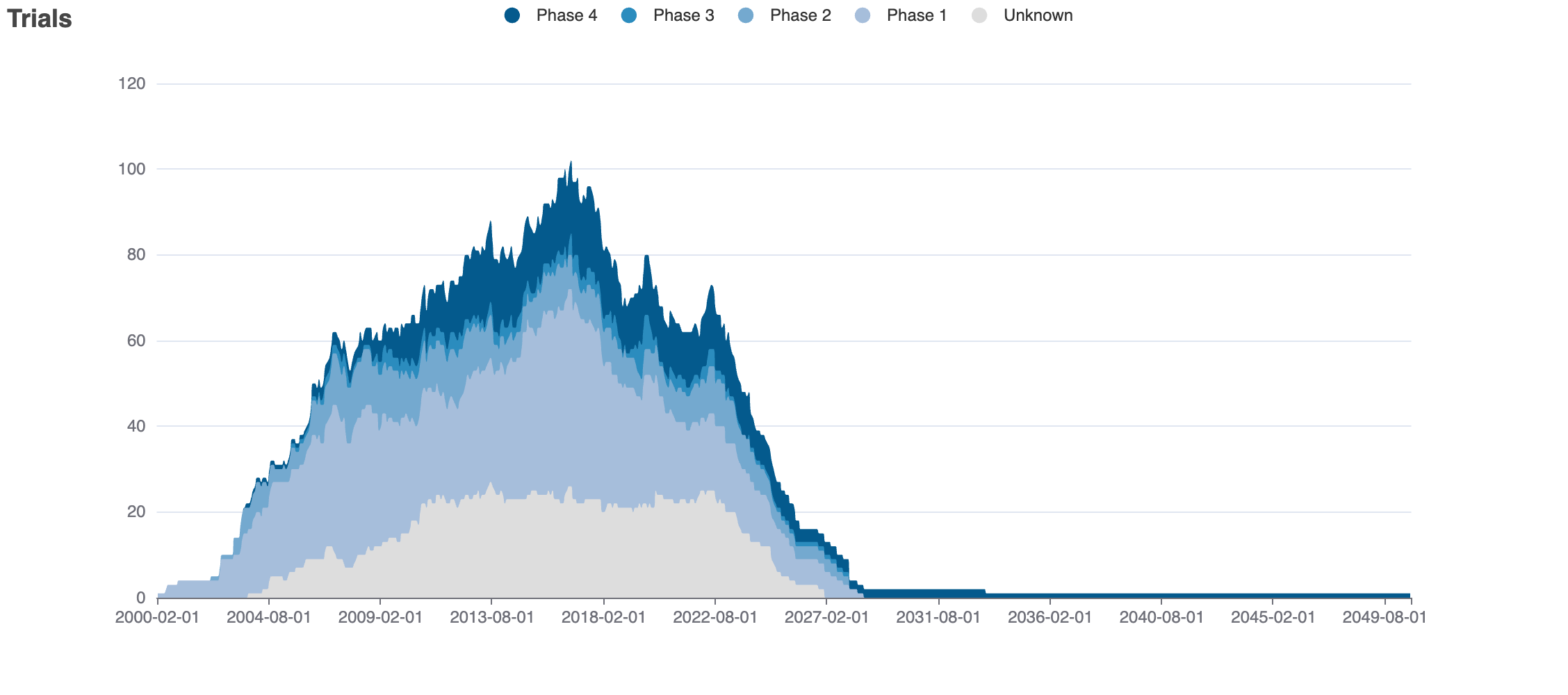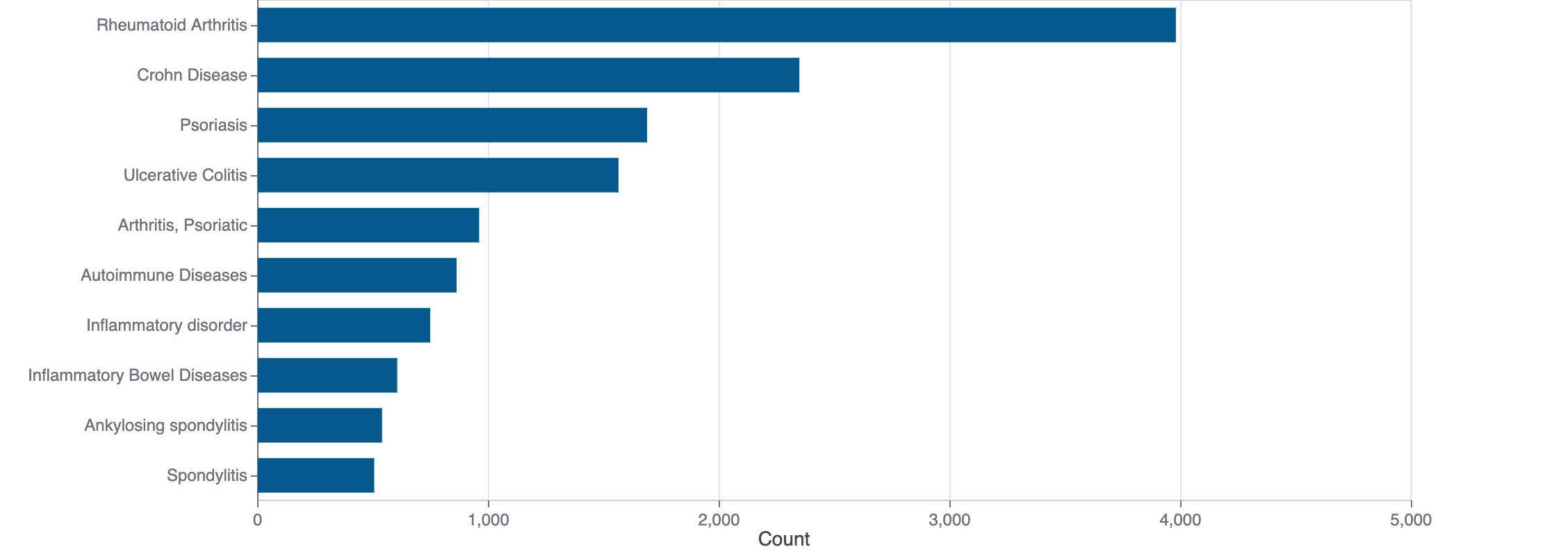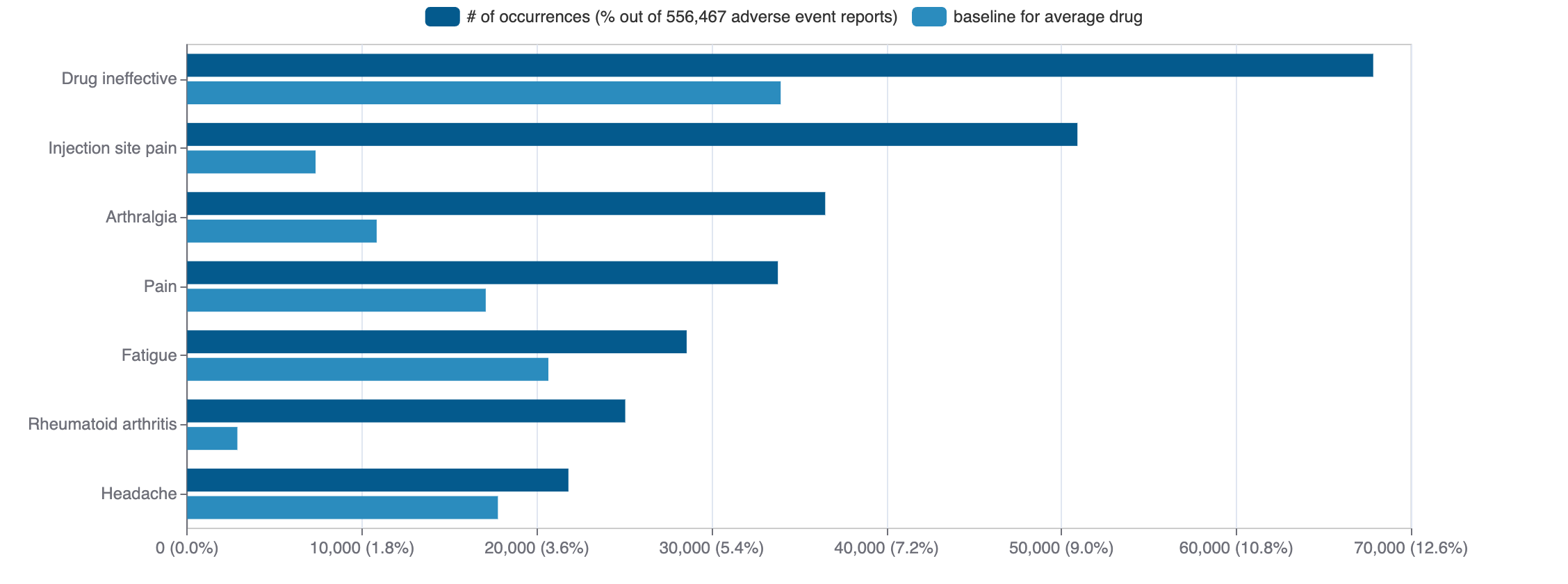REBASTINIB
Rebastinib is a small molecule pharmaceutical. It is currently being investigated in clinical studies. It is known to target tyrosine-protein kinase Yes and tyrosine-protein kinase ABL1.
Download report
Favorite
Events Timeline
Commercial
Clinical
Drug
Target
Variants
Financial
Trends
Safety
Events Timeline
5D
1M
3M
6M
YTD
1Y
2Y
5Y
Max
Events
FDA approval date
EMA approval date
Patent expiration date
Study first post date
Last update post date
Start date
Primary completion date
Completion date
Results first post date

Mock data
Subscribe for the real data
Subscribe for the real data
Commercial
No data
Clinical
Clinical Trials
4 clinical trials
View more details

Mock data
Subscribe for the real data
Subscribe for the real data
Indications Phases 4
No data
Indications Phases 3
No data
Indications Phases 2
Indication | MeSH | Ontology | ICD-10 | Ph 1 | Ph 2 | Ph 3 | Ph 4 | Other | Total |
|---|---|---|---|---|---|---|---|---|---|
| Breast neoplasms | D001943 | EFO_0003869 | C50 | 2 | 1 | — | — | — | 2 |
| Neoplasms | D009369 | — | C80 | 2 | 2 | — | — | — | 2 |
| Neoplasm metastasis | D009362 | EFO_0009708 | — | 2 | 1 | — | — | — | 2 |
| Ovarian neoplasms | D010051 | EFO_0003893 | C56 | 1 | 1 | — | — | — | 1 |
| Endometrial neoplasms | D016889 | EFO_0004230 | — | 1 | 1 | — | — | — | 1 |
| Mesodermal mixed tumor | D018199 | EFO_1001371 | — | 1 | 1 | — | — | — | 1 |
Indications Phases 1
Indication | MeSH | Ontology | ICD-10 | Ph 1 | Ph 2 | Ph 3 | Ph 4 | Other | Total |
|---|---|---|---|---|---|---|---|---|---|
| Leukemia | D007938 | — | C95 | 1 | — | — | — | — | 1 |
| Bcr-abl positive chronic myelogenous leukemia | D015464 | EFO_0000340 | — | 1 | — | — | — | — | 1 |
| Adenocarcinoma | D000230 | — | — | 1 | — | — | — | — | 1 |
Indications Without Phase
No data
Epidemiology
Epidemiological information for investigational and approved indications
View more details
Drug
General
| Drug common name | REBASTINIB |
| INN | rebastinib |
| Description | DCC-2036 is a member of the class of ureas that is urea in which one of the nitrogens bears a 3-tert-butyl-1-(quinolin-6-yl)-1H-pyrazol-5-yl substituent, while the other bears a 2-fluoro-4-{[2-(methylcarbamoyl)pyridin-4-yl]oxy}phenyl substituent. It has a role as a tyrosine kinase inhibitor. It is a member of quinolines, a pyridinecarboxamide, a member of pyrazoles, an organofluorine compound and a member of phenylureas. |
| Classification | Small molecule |
| Drug class | tyrosine kinase inhibitors |
| Image (chem structure or protein) |  |
| Structure (InChI/SMILES or Protein Sequence) | CNC(=O)c1cc(Oc2ccc(NC(=O)Nc3cc(C(C)(C)C)nn3-c3ccc4ncccc4c3)c(F)c2)ccn1 |
Identifiers
| PDB | — |
| CAS-ID | 1020172-07-9 |
| RxCUI | — |
| ChEMBL ID | CHEMBL1738757 |
| ChEBI ID | 62166 |
| PubChem CID | — |
| DrugBank | — |
| UNII ID | 75017Q6I97 (ChemIDplus, GSRS) |
Target
Agency Approved
No data
Alternate
ABL1
ABL1
Organism
Homo sapiens
Gene name
ABL1
Gene synonyms
ABL, JTK7
NCBI Gene ID
Protein name
tyrosine-protein kinase ABL1
Protein synonyms
Abelson murine leukemia viral oncogene homolog 1, Abelson tyrosine-protein kinase 1, ABL protooncogene 1 nonreceptor tyrosine kinase, BCR-ABL1 p190, BCR/ABL e8a2 fusion, BCR/ABL1 e1a2 fusion protein, bcr/c-abl oncogene protein, c-abl oncogene 1, receptor tyrosine kinase, p150, Proto-oncogene c-Abl, proto-oncogene tyrosine-protein kinase ABL1, v-abl Abelson murine leukemia viral oncogene homolog 1
Uniprot ID
Mouse ortholog
Abl1 (11350)
tyrosine-protein kinase ABL1 (P00520)
Variants
No data
Financial
No data
Trends
PubMed Central
Top Terms for Disease or Syndrome:

Mock data
Subscribe for the real data
Subscribe for the real data
Additional graphs summarizing 271 documents
View more details
Safety
Black-box Warning
No Black-box warning
Adverse Events
© 2020-2025 Collaborative Drug Discovery Inc. (CDD) | Terms of Use
